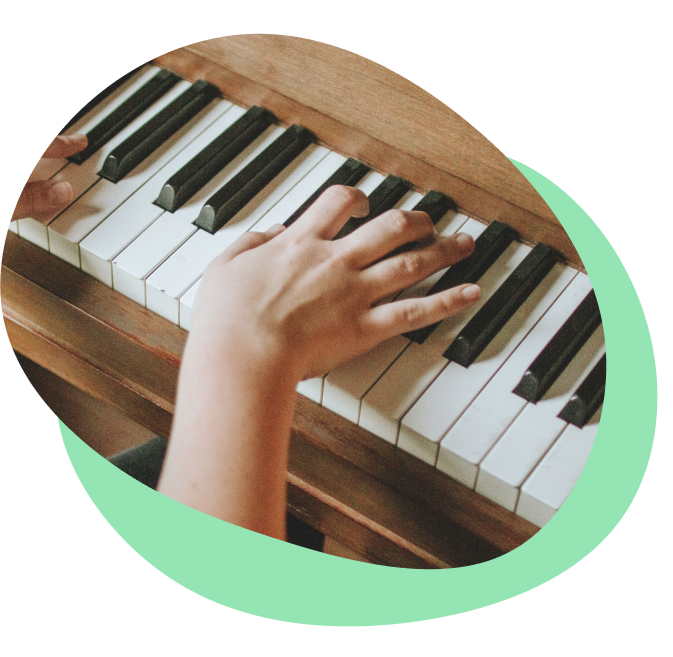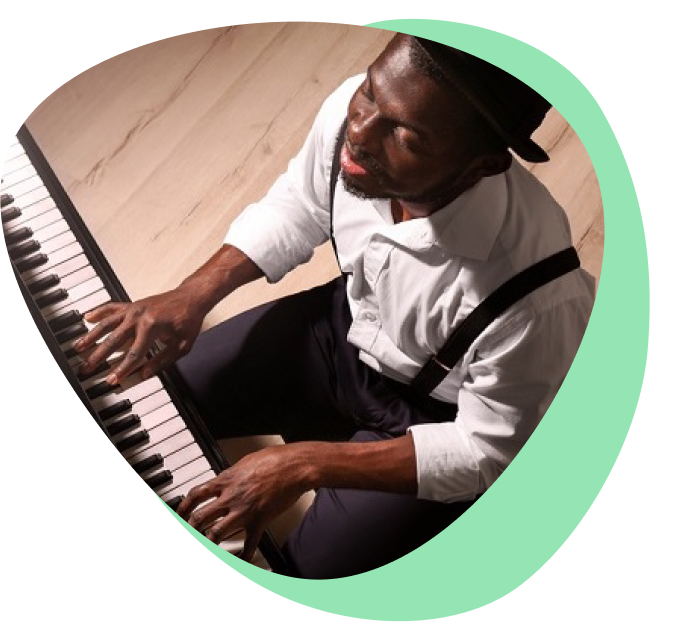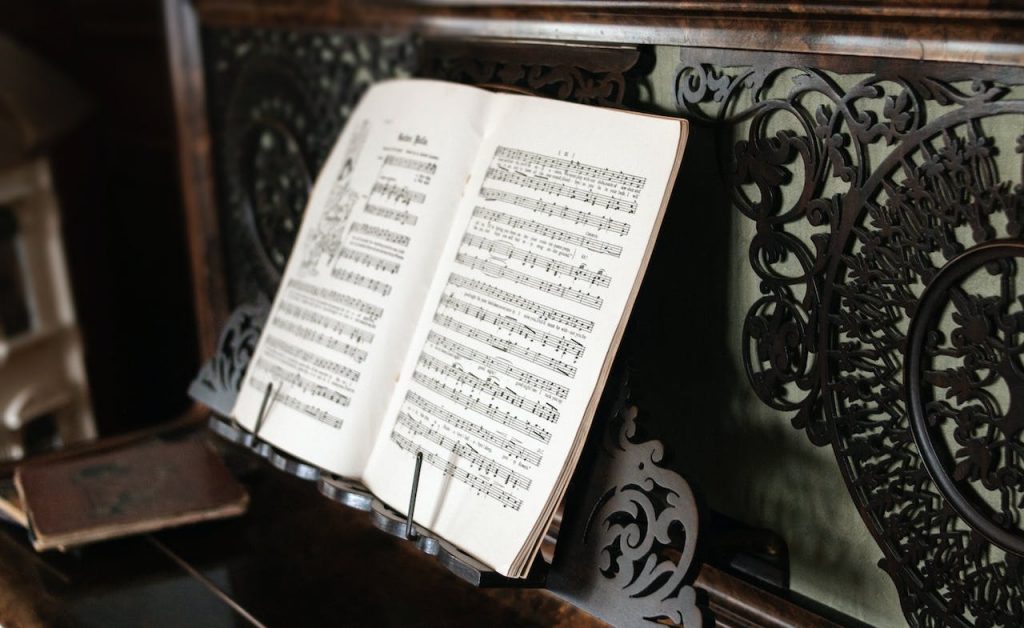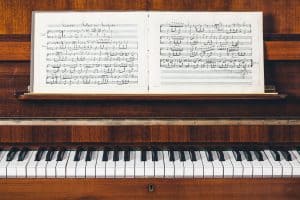What are passing notes?
What are passing notes? A passing note, or “non-chord tone” is a musical note that is not part of the main chord but is used to bridge or connect two chord tones. Think of it as a bridge that guides the listener from one chord tone to another, adding depth and flavor to the melody.
Imagine you’re walking on a path and come across a small stream. Instead of jumping directly to the other side, you use a stepping stone in the middle to ensure a smooth transition. In music, passing notes serve a similar purpose, ensuring seamless voice leading and smooth flowing harmony.
- Fall in love with the music - Learn your favorite songs, at a level suitable for you.
- Enjoy interactive piano lessons - Explore courses covering music theory, technique chords & more.
- Get real-time feedback - Skoove's feedback tells you what went well and what needs practice.
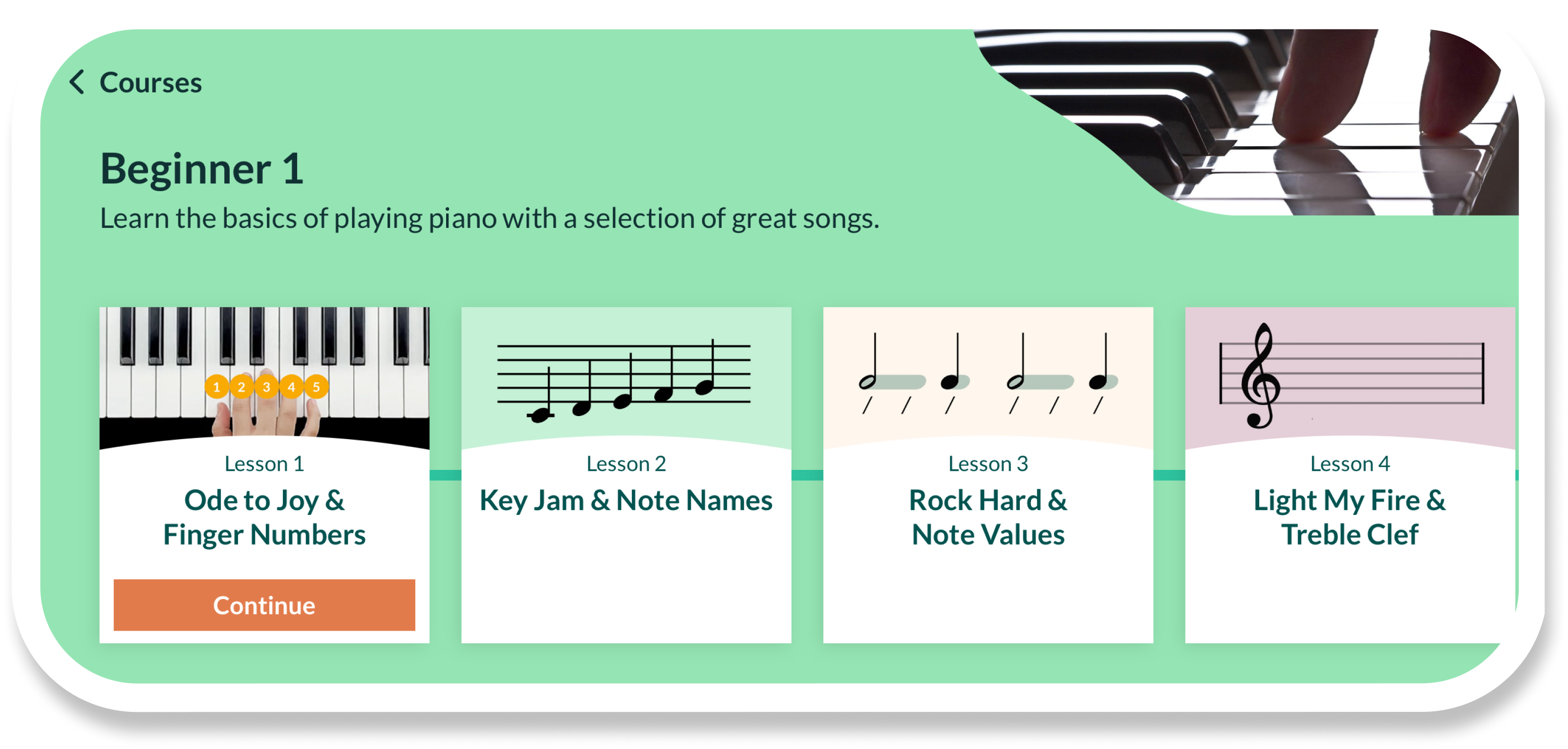
The history of passing notes
The concept of passing notes has been around for centuries, tracing its roots back to the Renaissance and Baroque periods. Composers of these eras, such as Johann Sebastian Bach and George Frideric Handel, frequently employed passing notes to embellish their melodies. For those exploring piano notes for beginners, these added tones introduce expressive possibilities beyond the basic chord tones.
How do posing tones work?
A significant focus is on the role of passing notes in enhancing melodic richness. The video contrasts a melody composed solely of chord notes with one that incorporates passing notes. This comparison demonstrates how passing notes can prevent a melody from sounding repetitive and inject a variety into a piano composition.
The presentation continues with a definition of passing notes as melodic elements that, while not part of the frequencies produced by the chord, being played, bridge the gap between chordal notes. The example using a C major chord, uses the passing note example, D, a non-chord tone. The D is used as a passing note between C and E. This illustration effectively shows how passing notes can add depth and complexity to a melody.
As we see, the grand staff passing notes are categorized into two distinct types: unaccented and accented. Unaccented passing notes appear between beats, subtly embellishing the melody. In contrast, accented passing notes, occurring on the beat, provide a more pronounced emphasis, crucial for composers aiming to convey specific emotional nuances or rhythmic emphasis in their music.
The functions of passing notes in music
Passing notes play a pivotal role in adding nuance and sophistication to a piece of music. They can:
- Enhance melodic movement – by bridging the gap between two chord tones, passing notes create a smoother melodic line, making the tune more pleasing to the ears.
- Introduce tension and release – the rhythmic use of a non-chord tone e.g a quarter note, can introduce a momentary tension, which is then resolved when the melody moves to a chord tone. This can create an emotional ebb and flow in the music.
- Add rhythmic variety – incorporating passing notes can break the monotony of a rhythm, introducing unexpected beats that can make a piece more engaging.
How to practice passing notes?
To practice passing notes it is vital that you pay attention to how they work so you will play them with the proper technique, nuance and emphasis. Skoove can guide your learning, whether you need help with ties, dotted notes or articulation. Our library of interactive songs and lessons will incorporate passing notes into your playing with ease.
Now you have learned what passing notes are, where they come from and how to use them. You are one step further on your musical journey. With help and guidance from Skoove you will master them in no time. Happy practicing!
Author of this blog post:

Eddie Bond is a multi-instrumentalist performer, composer, and music instructor currently based in Seattle, Washington USA. He has performed extensively in the US, Canada, Argentina, and China, released over 40 albums, and has over a decade experience working with music students of all ages and ability levels.
Published by Lydia Ogn from the Skoove team




